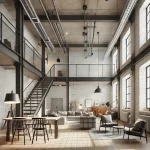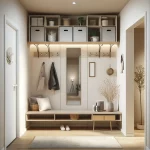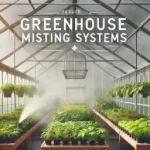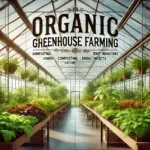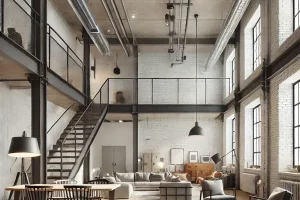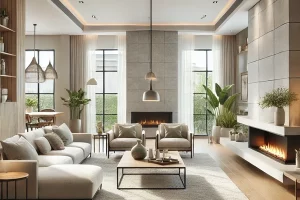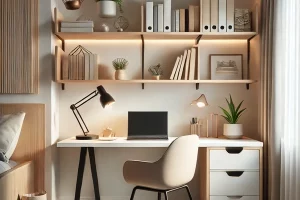Hello, plant lovers! This guide is all about a special kind of greenhouse. We will also talk about a special kind called a cold frame greenhouse.
A cold frame greenhouse is a simple plant house. It uses the sun to keep it warm inside. It doesn’t need extra heaters or fans. It’s good for growing plants for a longer time. It’s also good for starting seeds early.
This guide will show you how to make your cold frame greenhouse. It will also tell you the good and bad things about it.
What Does Cold Frame Greenhouse Mean?
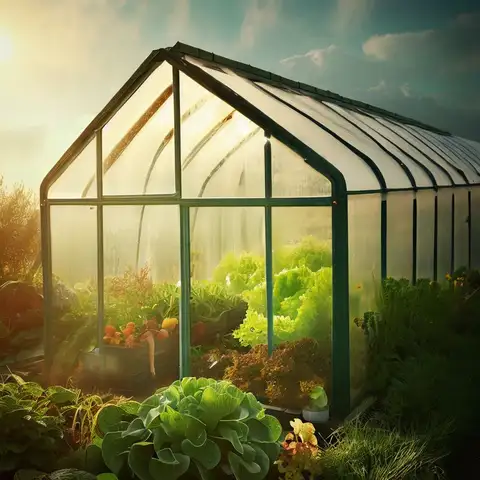
Definition and Basic Concept
A Cold Frame Greenhouse is a small box made of wood, plastic, or metal with a clear top. This top lets sunlight in but keeps cold air out. It’s like a mini-greenhouse that sits on the ground. You can put plants inside to keep them warm and help them grow when it’s cold outside.
How It Differs From Other Types of Greenhouses
You might be wondering, “How is a cold frame greenhouse different from other greenhouses?” Good question! Most greenhouses are big and tall, and they can be heated to stay warm all year. But a cold frame greenhouse is usually small and close to the ground. It uses the sun’s heat to keep plants warm, not a heater.
Here are some key differences:
- Size: Cold frame greenhouses are smaller.
- Heat Source: Cold frames use the sun, not heaters.
- Cost: Cold frames are usually cheaper to build or buy.
- Ease of Use: Cold frames are easier to set up and take care of.
Cold frame greenhouse is a simple, low-cost way to help your plants grow better in cold weather. It’s different from a big, fancy greenhouse, but it does a great job for its size!
How to Build a Cold Frame Greenhouse
Materials Needed
To build your own Cold Frame Greenhouse, you’ll need a few things:
- Wooden Boards: For the frame.
- Clear Plastic Sheet: To cover the top.
- Screws: To hold everything together.
- Hinges: To make the top open and close.
- Drill: For making holes.
- Screwdriver: To put in the screws.
- Measuring Tape: To measure the wood.
Step-by-Step Guide
Here’s how to build it:
- Measure and Cut: Use your measuring tape to measure the wooden boards. Cut them to the size you want your cold frame to be.
- Build the Box: Use the drill to make holes in the wooden boards. Then use screws to attach them to a box shape.
- Attach the Top: Put the clear plastic sheet over the top of the box. Use more screws to attach it.
- Add Hinges: Attach hinges to one side of the top so you can open and close it.
- Test It: Open and close the top to make sure it works. If it does, you’re done!
Safety Precautions
Safety is important! Here are some tips:
- Wear Gloves To protect your hands.
- Use Safety Goggles: To keep your eyes safe.
- Be Careful with Tools: Always follow the tool instructions.
- Ask for Help: If you need help with how to do something, ask someone who knows.
Advantages and Disadvantages of Cold Frame Greenhouses
Advantages
Energy Savings
Cold Frame Greenhouses are energy-efficient. They trap heat from the sun, so you don’t need to use electric heaters. It can save you money on your energy bills.
Quick Harvest
Because they keep plants warm, you can get a quick harvest. It is great if you’re growing veggies and want to eat them soon!
Safe from Critters
A Cold Frame Greenhouse can keep out rabbits, deer, and other animals that might want to eat your plants.
Easy to Move
Most Cold Frame Greenhouses are lightweight. You can move them around your yard to catch the best sunlight.
Disadvantages and How to Fix Them
Limited Height
Some plants grow tall and might not fit.
- Fix: Choose plants that stay small or trim them to fit.
Condensation
Water can build up inside and make plants too wet.
- Fix: Add small vents or holes for better airflow.
Requires Regular Check
You need to open and close the top often to control the temperature.
- Fix: Use a temperature-sensitive vent that opens and closes by itself.
The advantages and disadvantages of Cold Frame Greenhouses: you can make a better choice for your garden. Whether you’re a beginner or an expert gardener, this information can help you get the most out of your Cold Frame Greenhouse.
Wooden Cold Frame Greenhouse
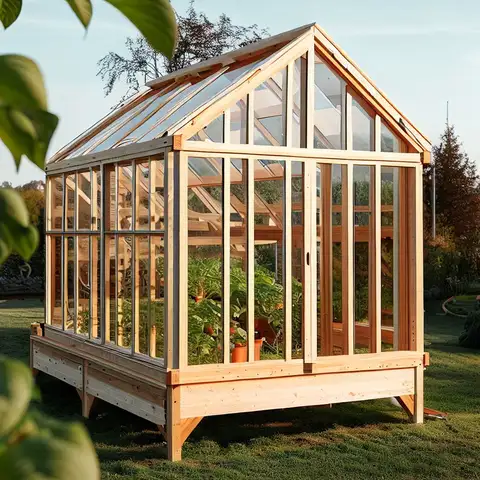
Features and Benefits of Wooden Frames
Natural Look
Wooden frames give a natural look that blends well with your garden.
Insulation
Wood is a good insulator, which means it helps keep the inside warm.
Easy to Customize
You can paint or stain the wood to match your garden’s style.
How to Build a Wooden Cold Frame Greenhouse
- Gather Materials: Wood planks, screws, a saw, a drill, and a clear plastic or glass top.
- Cut the Wood: Cut the planks to the size you want.
- Assemble the Frame: Use screws to put the wood pieces together.
- Attach the Top: Screw on the clear top.
- Seal Edges: Use caulk to seal any gaps to keep the heat in.
Large Cold Frame Greenhouse
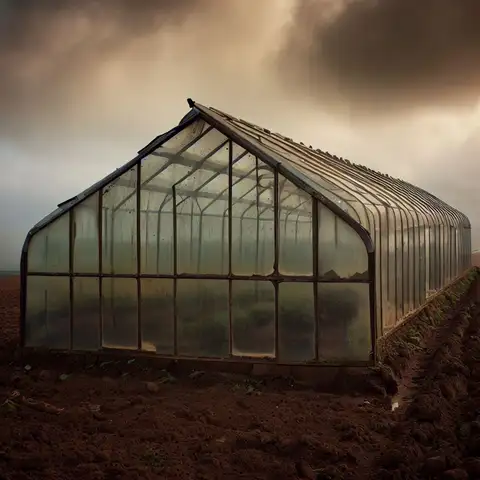
When and Why You Might Need a Large Cold Frame Greenhouse
More Space
If you have lots of plants, a large cold frame greenhouse gives them more space to grow.
Versatility
You can grow different types of plants, even small trees!
Features and Benefits
Strong Structure
Large cold frame greenhouses are built to be strong so they can hold more plants.
Advanced Features
Some come with built-in vents and temperature controls.
Room for Tools
You can store your gardening tools inside, so they’re always handy.
Mini Cold Frame Greenhouse
Ideal for Small Spaces
A mini cold frame greenhouse is perfect if you have limited space in your garden or even on a balcony.
How to Build a Mini Cold Frame Greenhouse
- Materials Needed: Small wood planks or PVC pipes, screws, and a small clear plastic or glass top.
- Cut and Assemble: Cut the materials to a small size and assemble.
- Attach the Top: Use screws to attach the clear top.
- Seal: Make sure to seal any gaps to keep the warmth in.
Tall Cold Frame Greenhouse
Benefits of a Tall Cold Frame Greenhouse
More Vertical Space
A tall, cold, frame greenhouse allows for more vertical space, which is great for plants that grow upwards, like tomatoes.
Better Air Circulation
The added height allows for better air circulation, which can help prevent plant diseases.
How to Construct a Tall Cold Frame Greenhouse
- Materials Needed: Tall wood planks or metal pipes, screws, a clear plastic or glass top.
- Cut the Wood or Pipes: Cut your materials to the desired height.
- Assemble the Frame: Use screws to assemble the frame.
- Attach the Top: Secure the clear top with screws.
- Add Vents: Consider adding vents at the top for better air circulation.
DIY Cold Frame Greenhouse
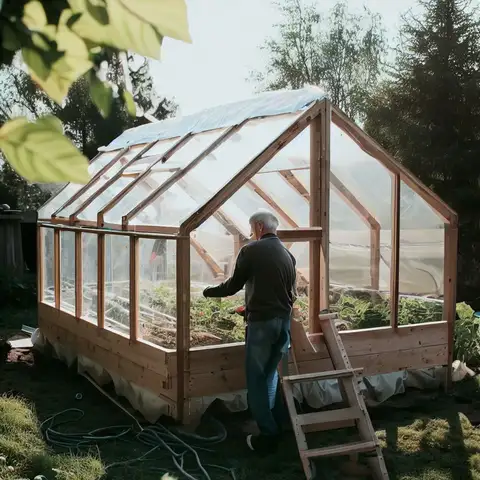
Tips for Building Your Cold Frame Greenhouse
Plan Ahead
Before you start, plan your design. Know the dimensions and where you’ll place the cold frame.
Choose the Right Materials
Select materials that are durable and weather-resistant, like treated wood or PVC pipes.
Insulate Well
Make sure to insulate the corners and edges to keep the warmth in.
Necessary Tools
- Measuring Tape: To measure the dimensions accurately.
- Saw: For cutting wood or pipes.
- Screwdriver: To assemble the frame.
- Drill: For making holes for screws.
- Hammer: For additional support.
- Sealant: To seal any gaps.
Cold Frame Greenhouse Kits
What to Look for in a Kit
- Ease of Assembly: Choose a kit that comes with clear instructions and requires minimal tools.
- Quality of Materials: Look for durable, weather-resistant materials like treated wood or high-quality plastic.
- Size: Make sure the kit fits the space you have available in your garden.
Recommended Brands
- Palram Cold Frame: Known for its durability and easy assembly.
- Gardman Wooden Cold Frame: Offers a rustic look and is made from FSC-certified timber.
- Zenport Cold Frame: Features double insulation and is budget-friendly.
Best Cold Frame Greenhouse
Top Picks Based on Different Needs
- For Small Spaces: Zenport Cold Frame is compact yet effective.
- For Durability: Palram Cold Frame is made with polycarbonate panels that last.
- For Aesthetics: Gardman Wooden Cold Frame adds a rustic charm to your garden.
Features to Consider
- Insulation: How well does it keep the heat in?
- Ventilation: Does it have adjustable vents?
- Ease of Access: How easy is it to open and close?
Choosing the right type of cold frame greenhouse is crucial for the success of your gardening. Whether you build your own or opt for a kit, make sure it meets your specific needs.
Encouragement
Don’t hesitate to try building your own. It’s a rewarding experience that gives you full control over your gardening environment.
FAQs About Cold Frame Greenhouses
What is a Cold Frame Greenhouse?
A cold frame greenhouse is a small box for plants. It keeps them warm. It has clear walls and a clear top.
How Does It Work?
The sun shines through the clear top. It warms up the inside. At night, it stays warm to keep plants safe.
Can I Make One Myself?
Yes, you can! You can use wood or old windows to make one. Some people even use straws!
What Plants Can Live in It?
Plants that like cold, like lettuce and spinach, are good. You can also start little seeds in it.
How Do I Let Air In?
You can open the top a little bit. It lets fresh air come in so it doesn’t get too hot.
Can I Use It in Summer?
Yes, but you have to open the top. It keeps it from getting too hot inside.
Where Should I Put It?
Put it where the sun shines a lot. The best place is where it can see the south sky.
How Often Do I Look at My Plants?
Look at them every day. It is good when it’s very hot or very cold.
Is It Costly?
Some are cheap, and some cost more. Making one yourself can save money.
How Is It Different From a Big Greenhouse?
A cold frame is small and only uses the sun for heat. A big greenhouse is big and can have extra heaters.
